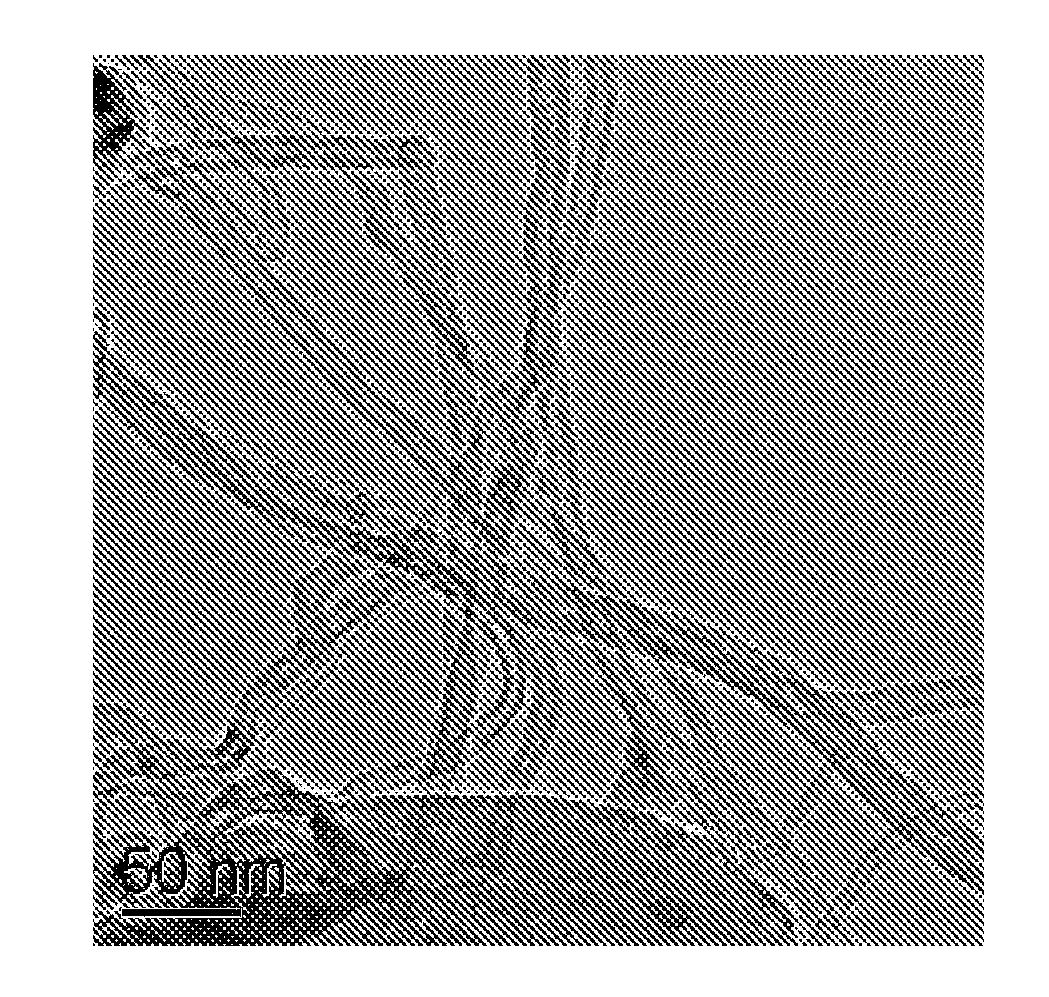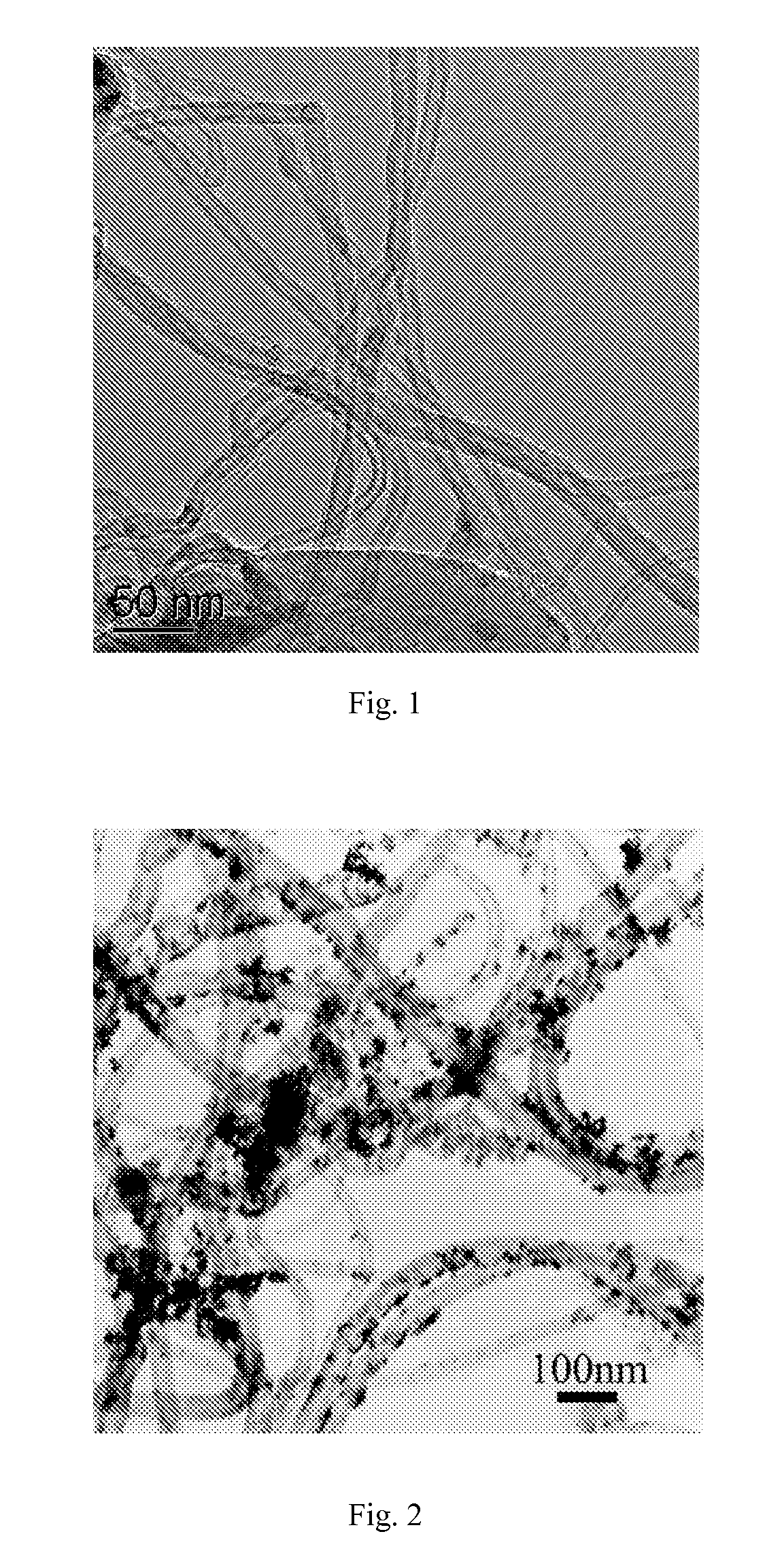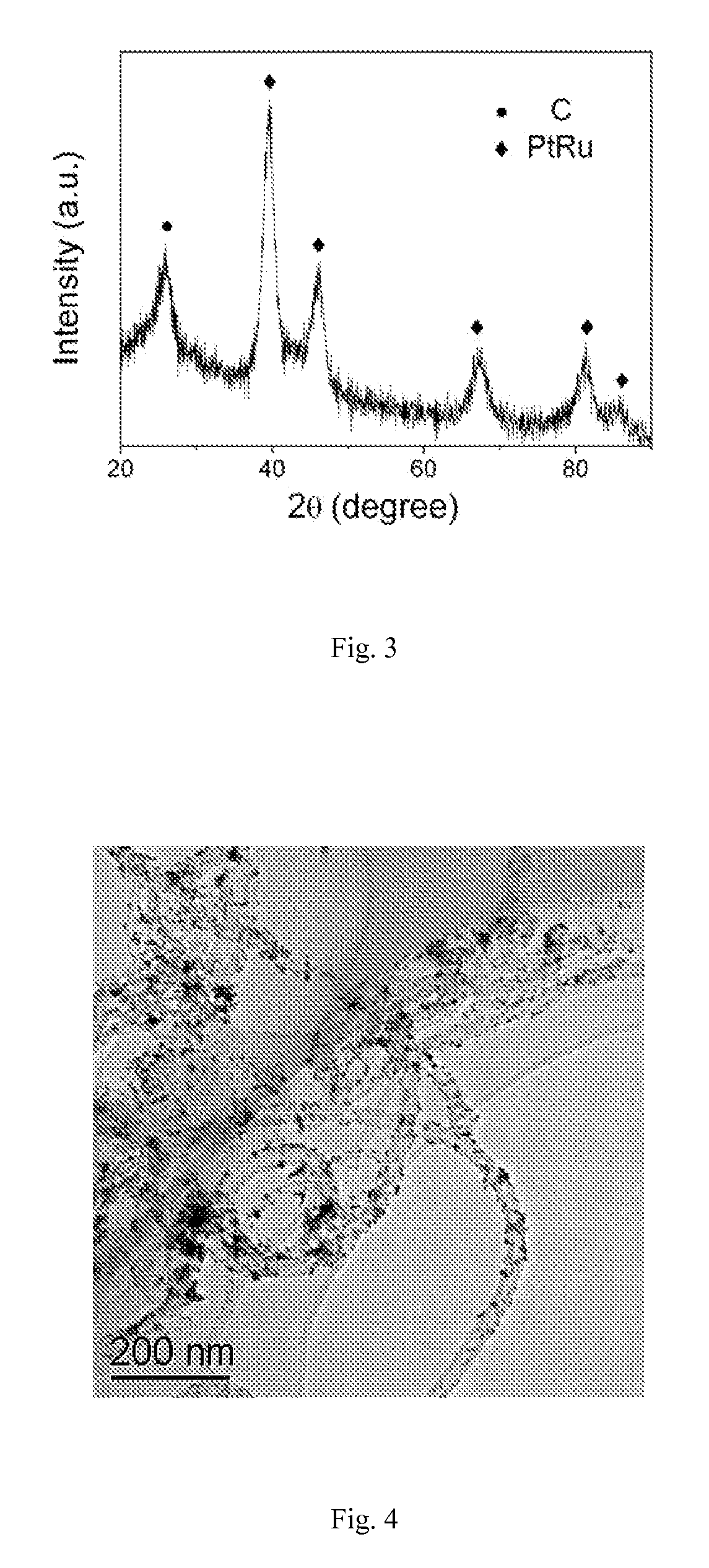Electrode Catalyst of Carbon Nitride Nanotubes Supported by Platinum and Ruthenium Nanoparticles and Preparation Method Thereof
a carbon nanotube and electrode catalysis technology, which is applied in the direction of metal/metal-oxide/metal-hydroxide catalysts, physical/chemical process catalysts, cell components, etc., can solve the problems of increasing processing difficulty and preparing costs, environmental pollution, and hard to obtain ultra-pure metallic (conducting) carbon nanotubes for electrode catalysis, etc., to achieve simple, rapid, effective and environmentally friendly methods to prepar
- Summary
- Abstract
- Description
- Claims
- Application Information
AI Technical Summary
Benefits of technology
Problems solved by technology
Method used
Image
Examples
example 2
[0024]0.1 g carbon nitride nanotubes were dispersed in 50 mL ethylene glycol solution of H2PtCl6 containing 0.015 g Pt and stirred for 4 h under nitrogen gas protection, then heated to 140° C. and maintained for 3 h. After reaction, the solid product was collected by filtration and vacuum-dried at 60° C., denoted as Pt / CNx. TEM image in FIG. 4 shows that Pt nanoparticles have the diameters of 1-15 nm. The characterization results of HRTEM image (FIG. 5) and EDS (FIG. 6) indicate that the supported nanoparticles are Pt nanoparticles. Similar results were obtained when H2PtCl6 is replaced by platinum acetate. Carbon nitride supported Ru nanoparticles when a single precursor, potassium chlororuthenate, was used.
example 3
[0025]0.1 g carbon nitride nanotubes were dispersed in 50 mL aqueous solution of mixed H2PtCl6 and RuCl3 (molar ratio of 1:1) containing 0.015 g Pt and 0.008 g Ru and stirred for 4 h under nitrogen protection, then mixed sodium borohydride solution (about 0.005-0.03 mol / L) and sodium hydroxide solution (about 0.01-0.15 mol / L) were added into the above solution till the pH value of the whole system reached about 10-12. After 0.5-3 h of reaction, the product similar to EXAMPLE 1 was obtained.
example 4
[0026]0.1 g carbon nitride nanotubes were dispersed in 50 mL aqueous solution of mixed H2PtCl6 and RuCl3 (molar ratio 1:1) containing 0.015 g Pt and 0.008 g Ru and stirred for 4 h, then filtrated and dried at room temperature. The solid sample obtained in this way was reduced by hydrogen at about 250-400° C. for about 1-4 h. After the sample was cooled to room temperature under hydrogen gas protection, the product similar to EXAMPLE 1 was obtained.
PUM
| Property | Measurement | Unit |
|---|---|---|
| diameters | aaaaa | aaaaa |
| temperature | aaaaa | aaaaa |
| diameters | aaaaa | aaaaa |
Abstract
Description
Claims
Application Information
 Login to View More
Login to View More - R&D
- Intellectual Property
- Life Sciences
- Materials
- Tech Scout
- Unparalleled Data Quality
- Higher Quality Content
- 60% Fewer Hallucinations
Browse by: Latest US Patents, China's latest patents, Technical Efficacy Thesaurus, Application Domain, Technology Topic, Popular Technical Reports.
© 2025 PatSnap. All rights reserved.Legal|Privacy policy|Modern Slavery Act Transparency Statement|Sitemap|About US| Contact US: help@patsnap.com



